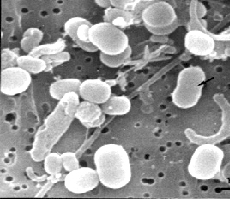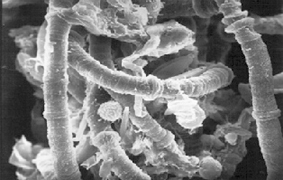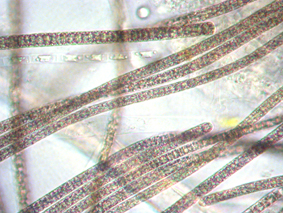|
The major objectives of this first project were: to estimate the contribution of cyanobacteria to primary production and to the input of newly fixed nitrogen into the basin, to examine biodiversity of waterblooms, to quantify biological nitrogen fixation and to ascertain the presence of protection mechanisms of nitrogenase, to define the ecological advantage of buoyancy in vertical migration of heterocystous species throughout the watercolumn. To this regard, the various cyanobacterial species have been characterised by morphometrical and ultrastructural analyses, and the role of superoxide dismutase in the protection of nitrogenase against photo-oxidative stresses has been ascertained.
BASIC-
An investigation of the structure and dynamics of water blooms of
cyanobacteria in the Baltic Sea: responses to a changing environment The second project was aimed to achieve a better understanding of the initiation and the temporal and spatial patchiness of cyanobacterial water blooms. Specific objectives included: to develop a method for an integrated computer analysis of photosynthesis, nitrogen fixation and toxin production; to assess the limiting factors for growth, photosynthesis and nitrogen fixation in filamentous and picoplanktic cyanobacteria; to identify toxin producers and toxins among filamentous and picoplanktic cyanobacteria and to assess their role in the ecological success of these organisms; to measure the transfer of nitrogen from diazotrophic to non-diazotrophic cyanobacteria and identify factors that control this transfer; to assess the genetic structure of cyanobacterial populations in the Baltic Sea. In particular, our laboratory contributed to the project by carrying out the following analyses: biomass quantification and morphometry of picoplanktic and filamentous cyanobacterial species; determination of pigment content, photosynthetic parameters and nitrogen reserves; ecophysiology and ultrastructure of picocyanobacteria in culture under nutrient limiting conditions; evaluation of the nutritional status of cyanobacterial species by sub-cellular element localisation in natural samples and in culture. Involved scientists: Patrizia Albertano, Roberta Congestri, Emanuela Viaggiu. Collaborations: L.J. Stal, Centre for Estuarine and Coastal Ecology, Yerseke (NL); A.E.Walsby; P.K.Hayes, University of Bristol (UK); J.R. Gallon, University of Swansea (UK); R. Boje and K. von Broekel, University of Kiel (D); B. Bergman, University of Stockholm (S), A. K. Sivonen, University of Helsinki (FIN). Grants: EU-Environment Programme, contract n° EV5V-CT94-0404;EU-Environment Programme, contract n° ENV4-CT97-0571. |


